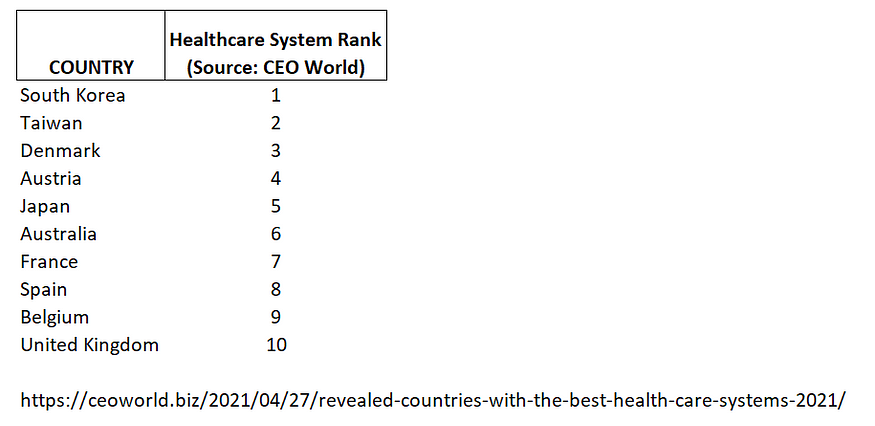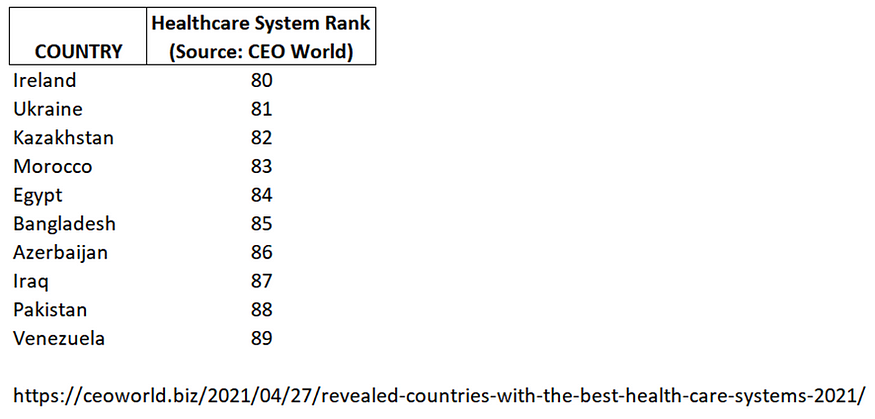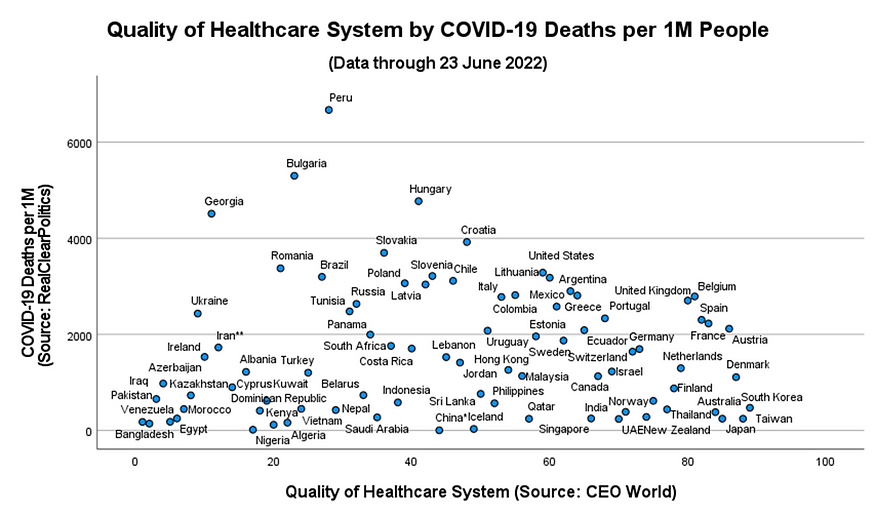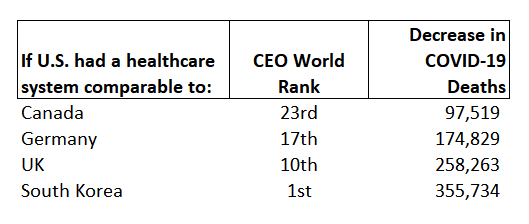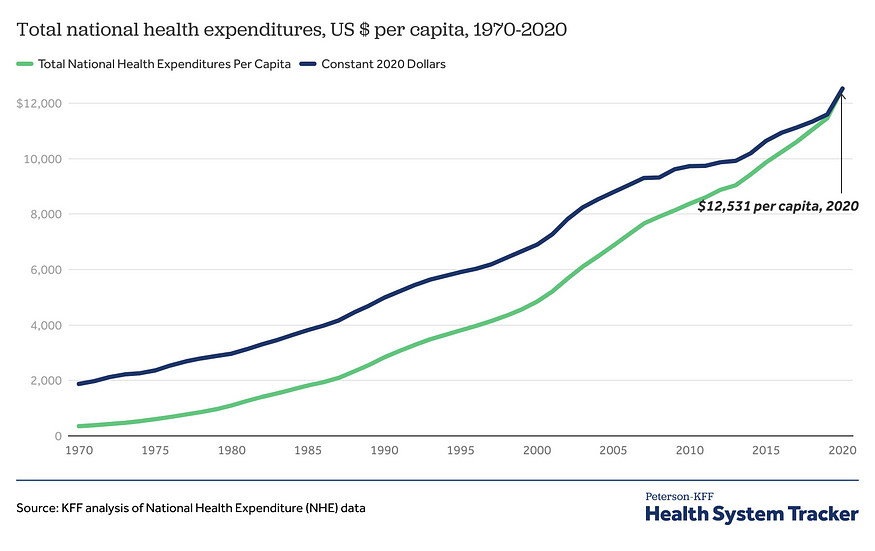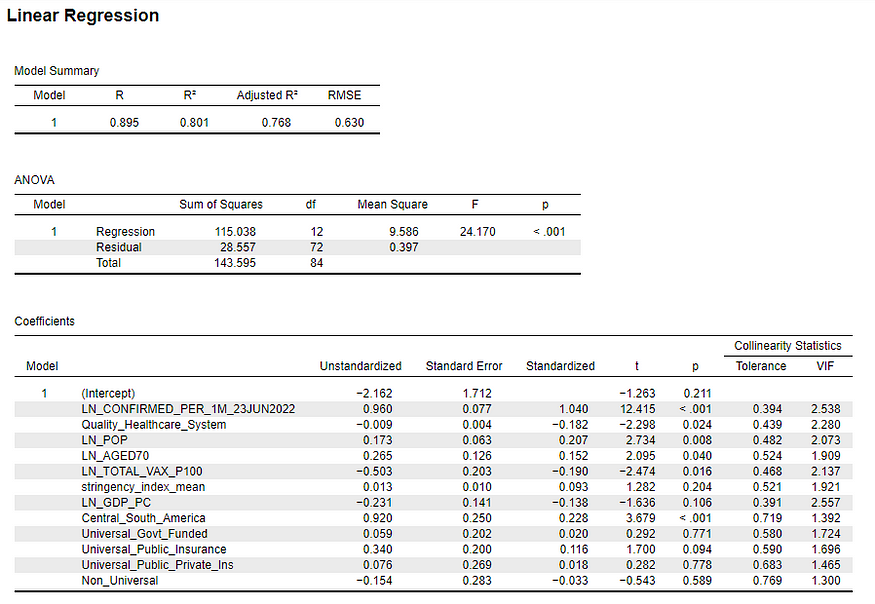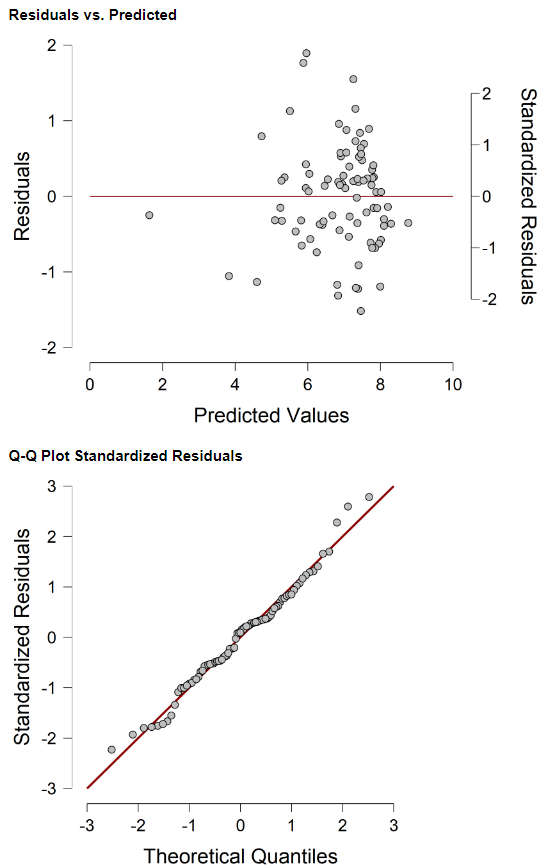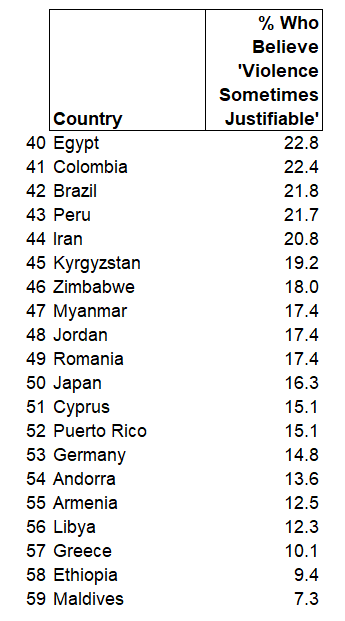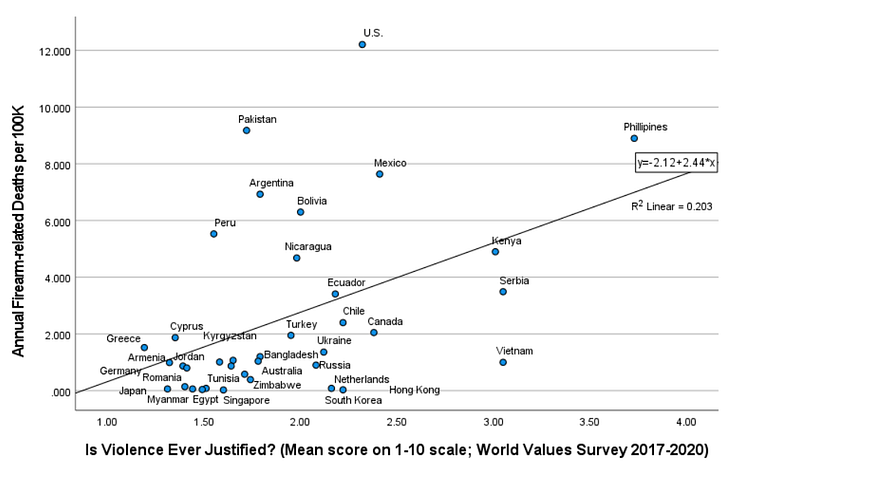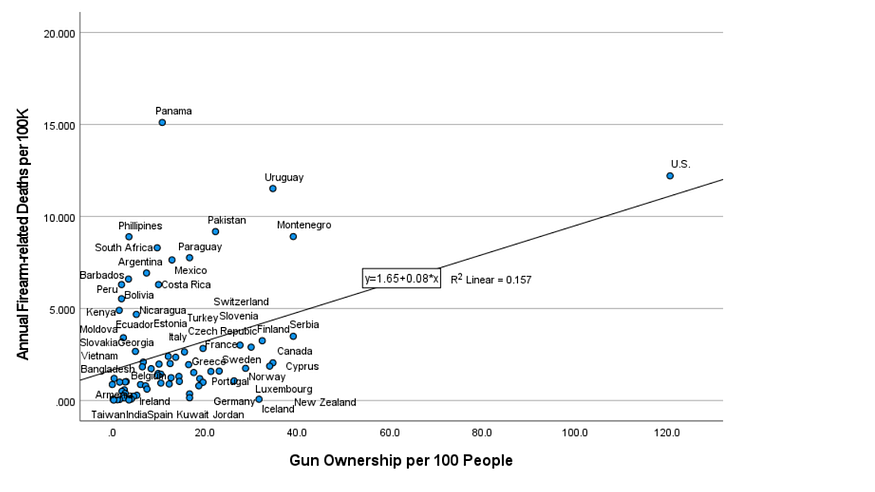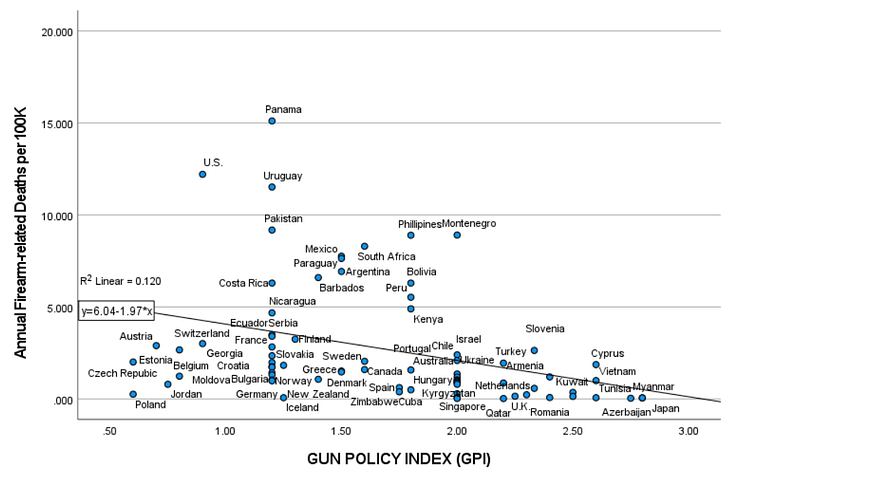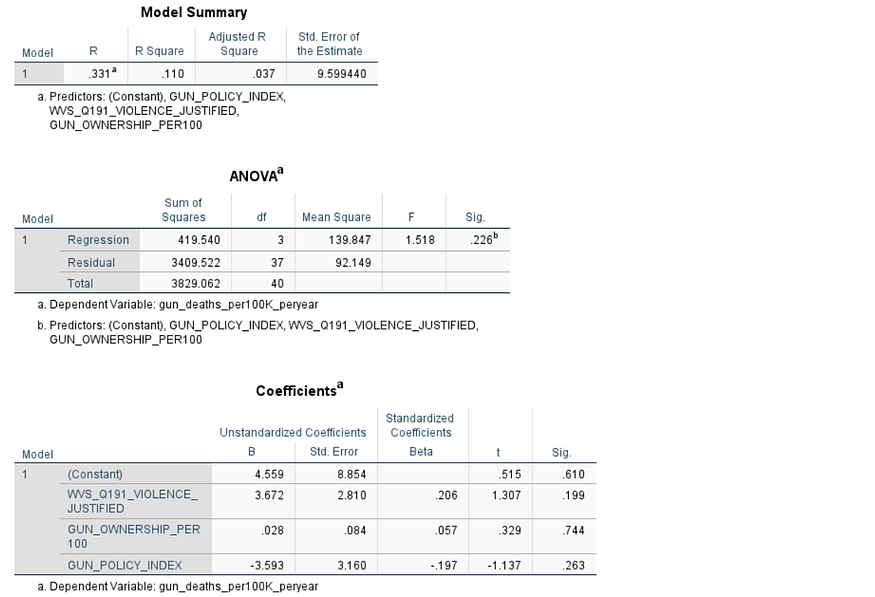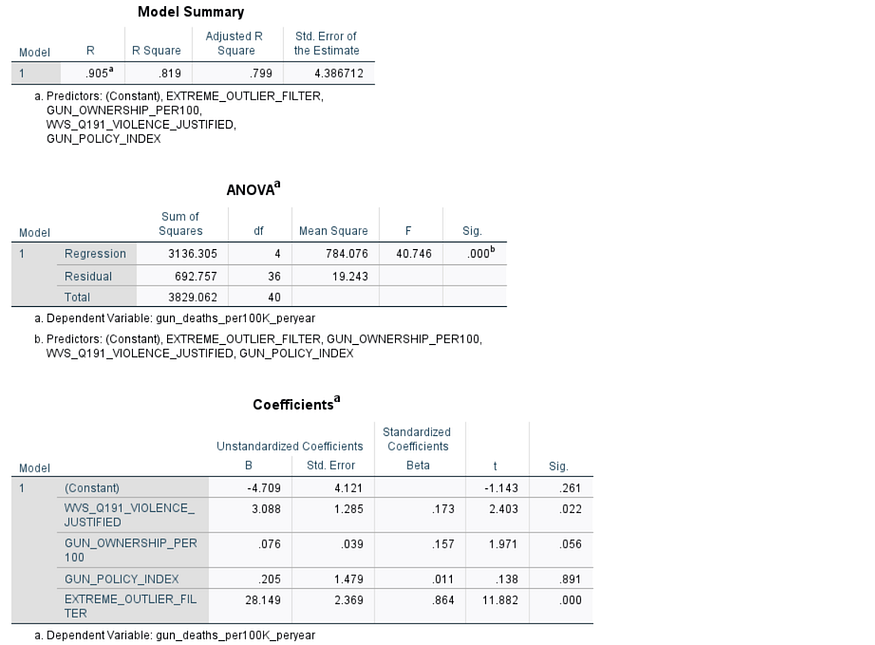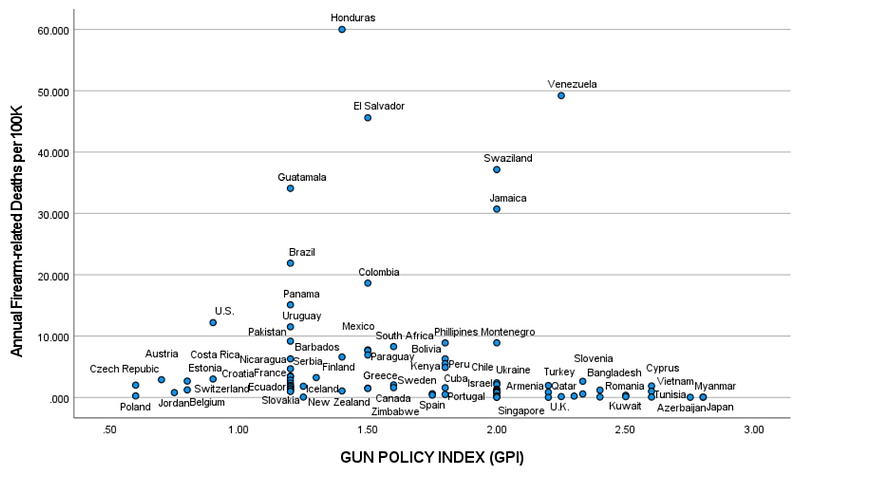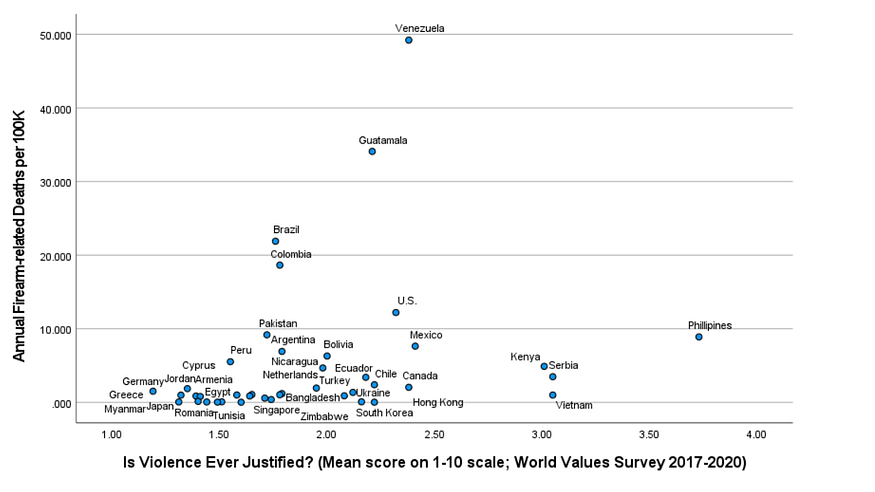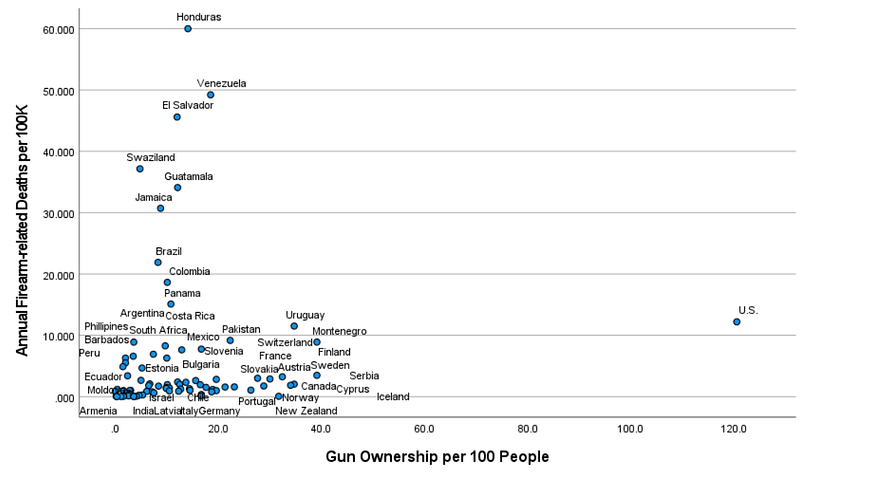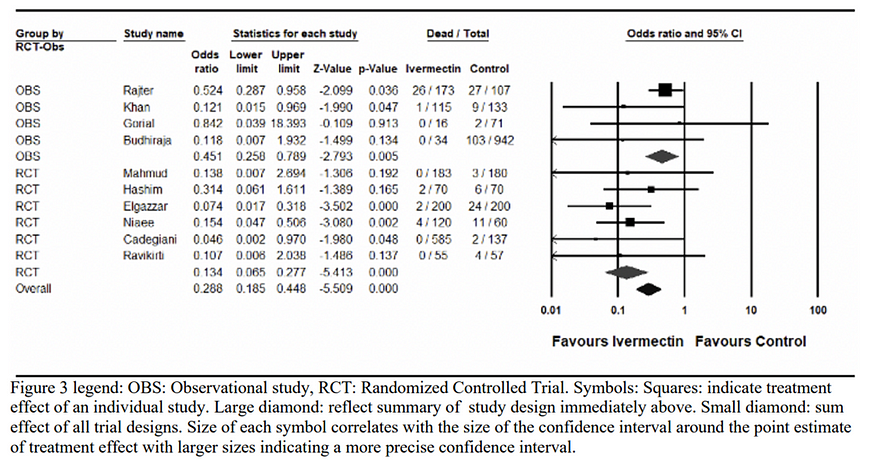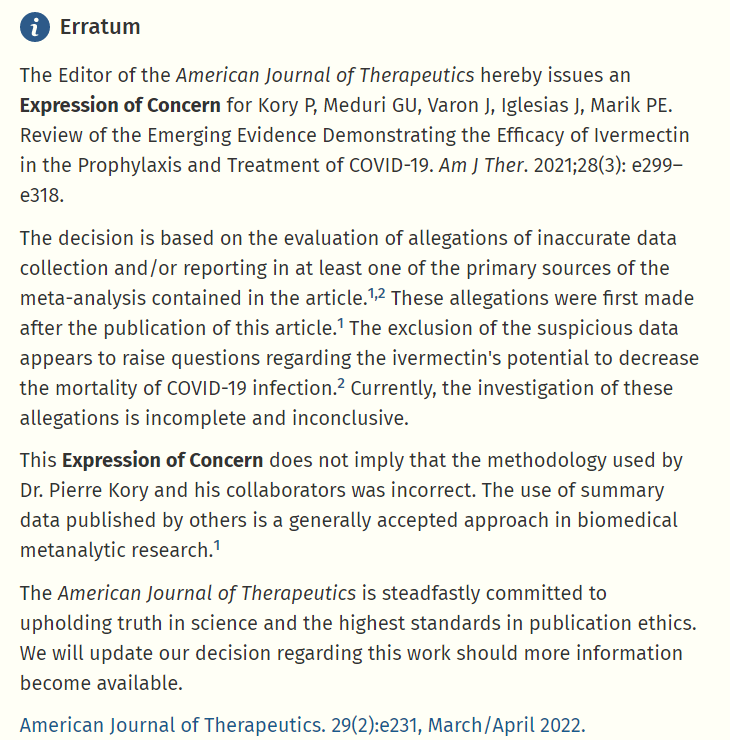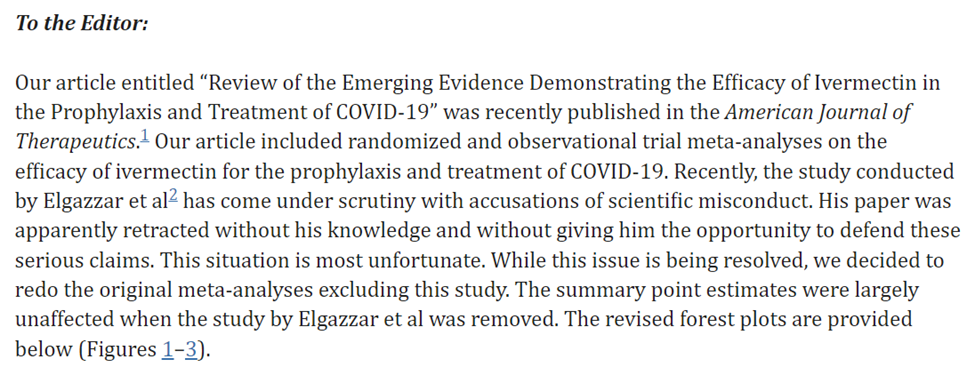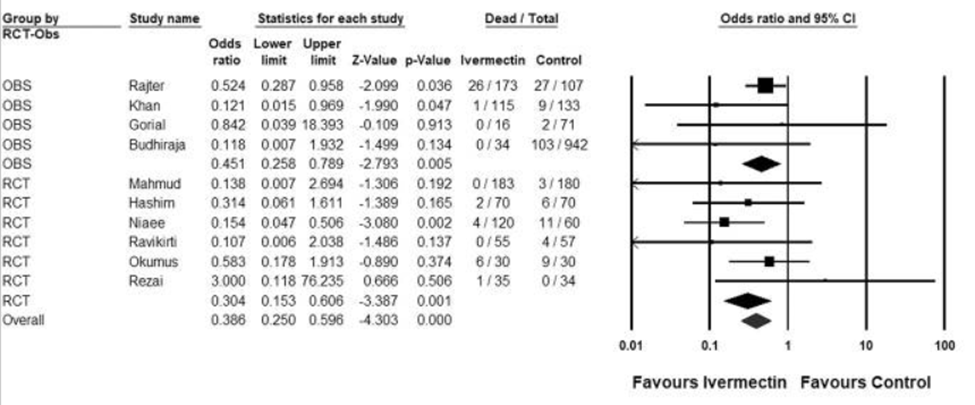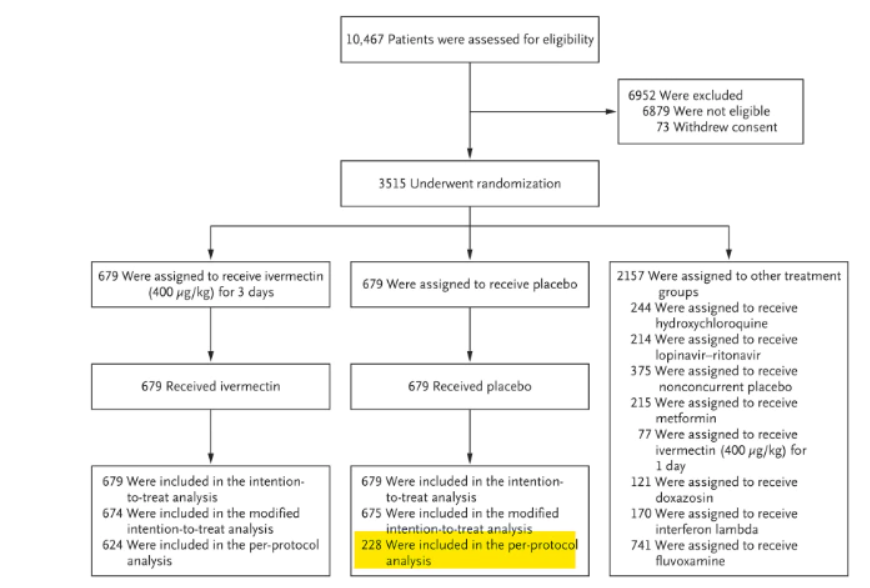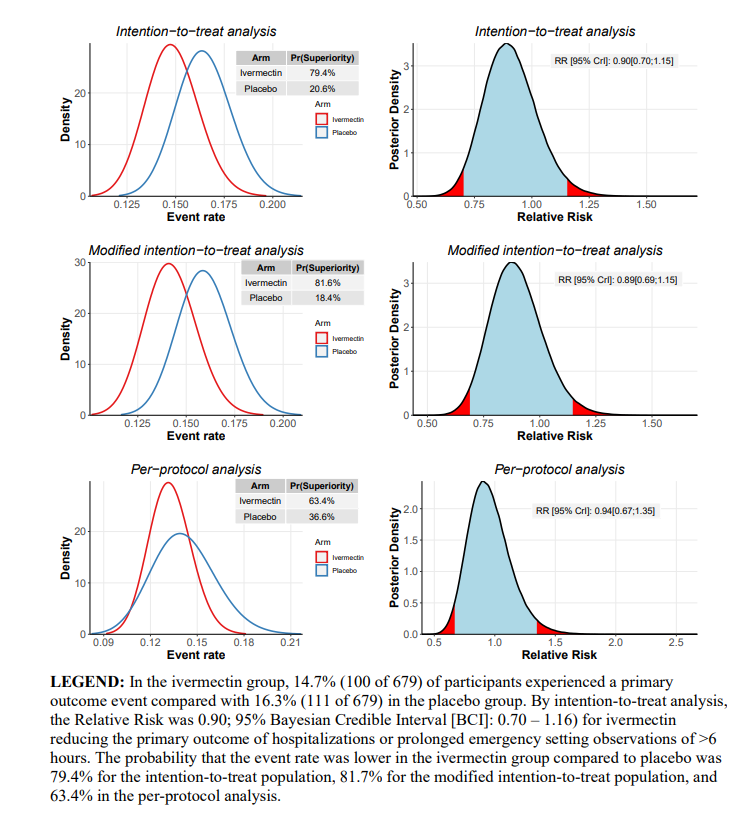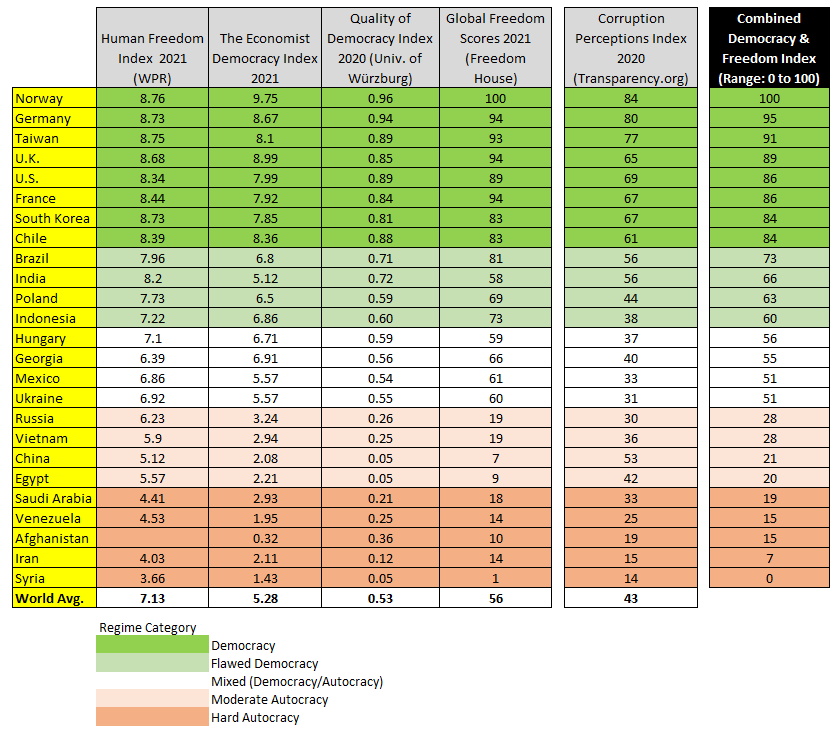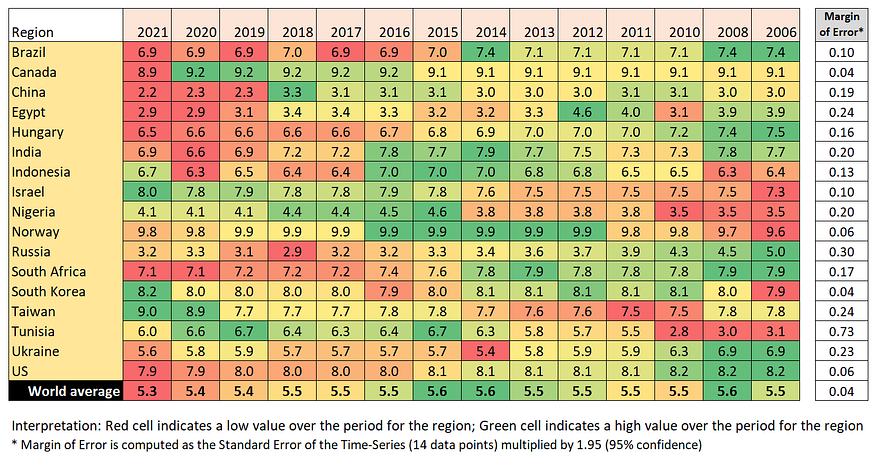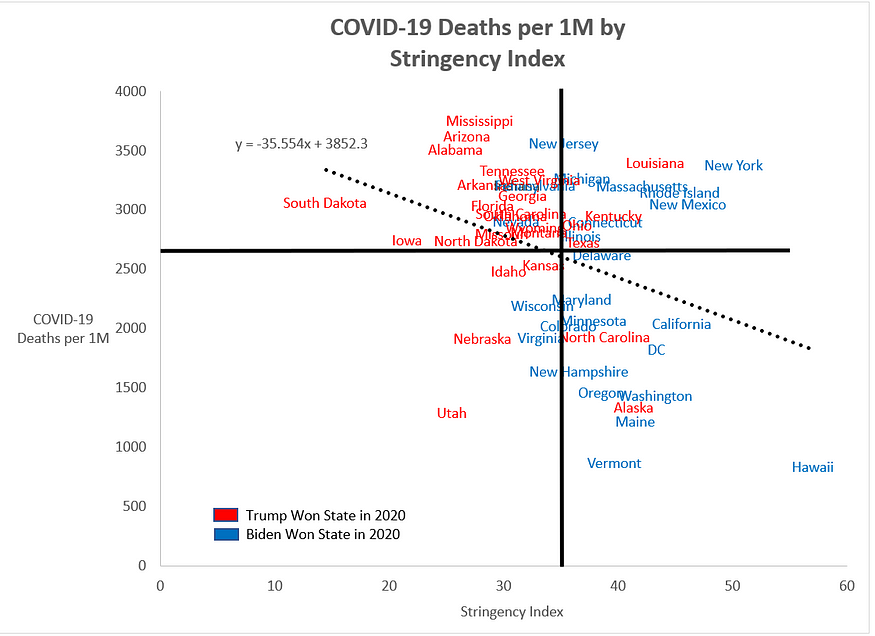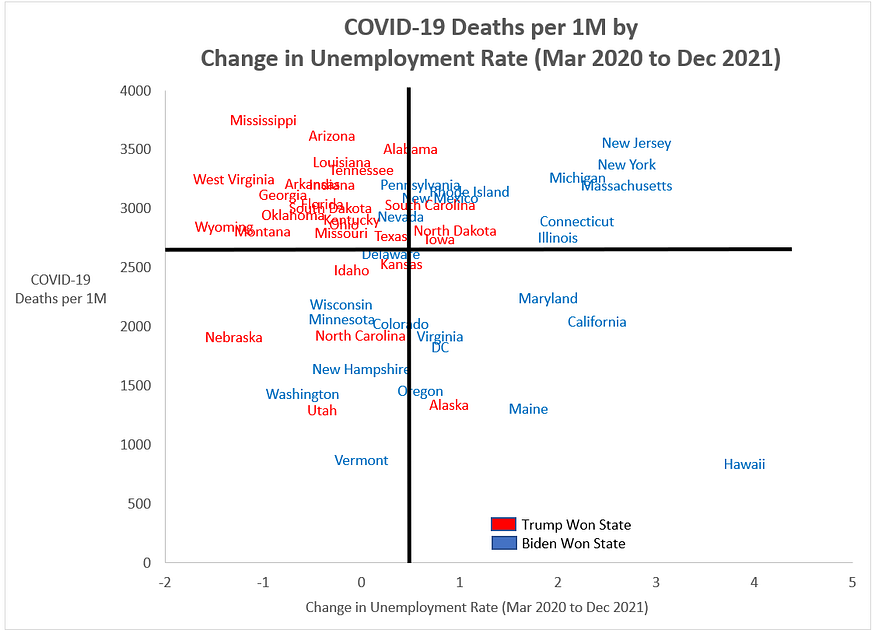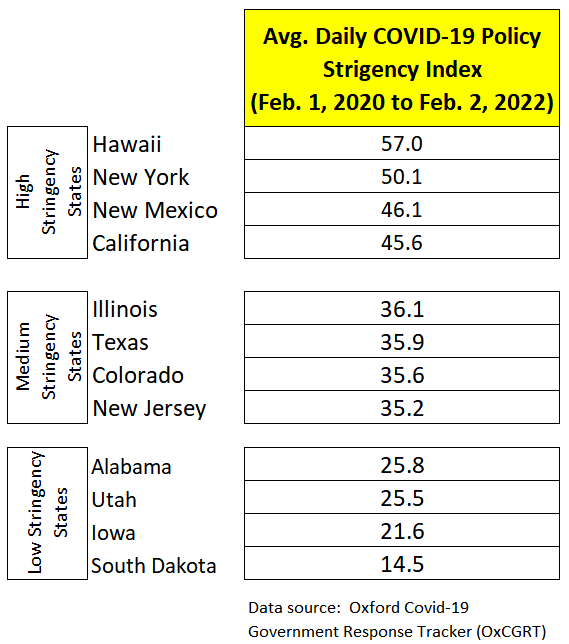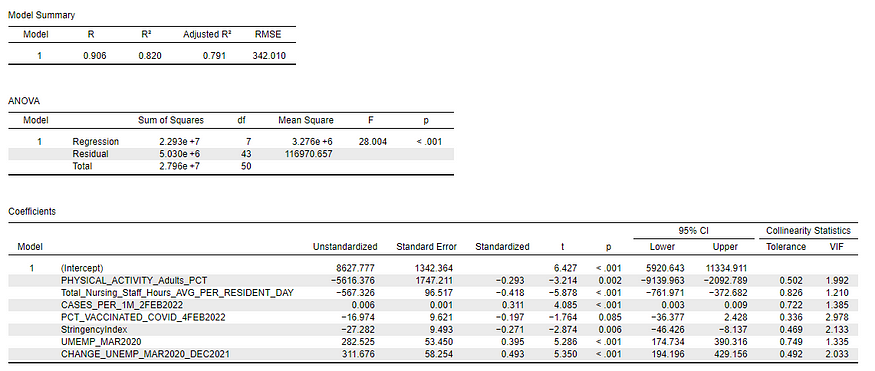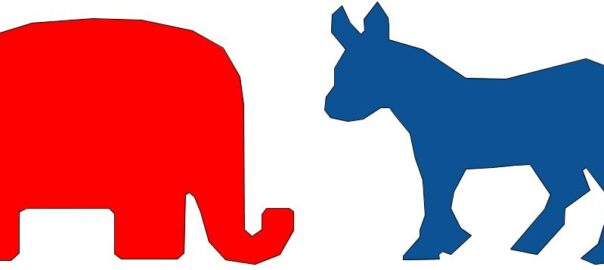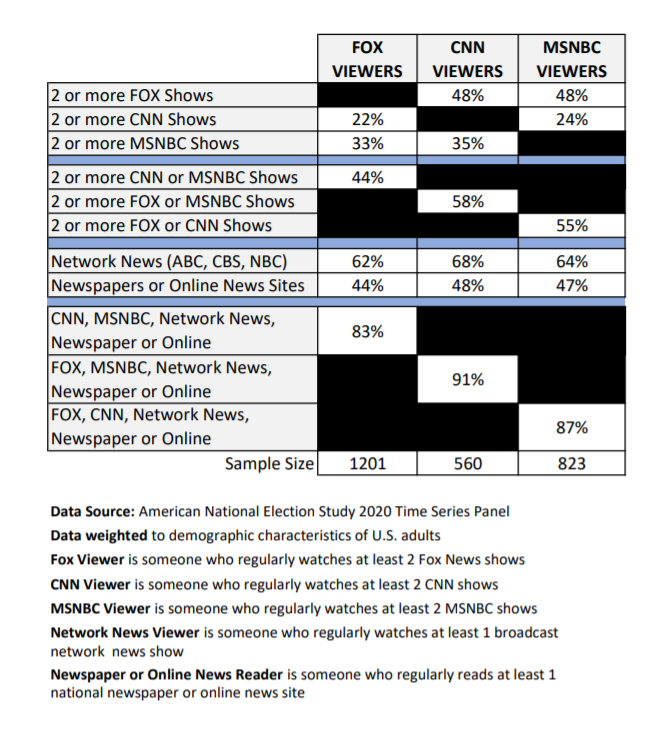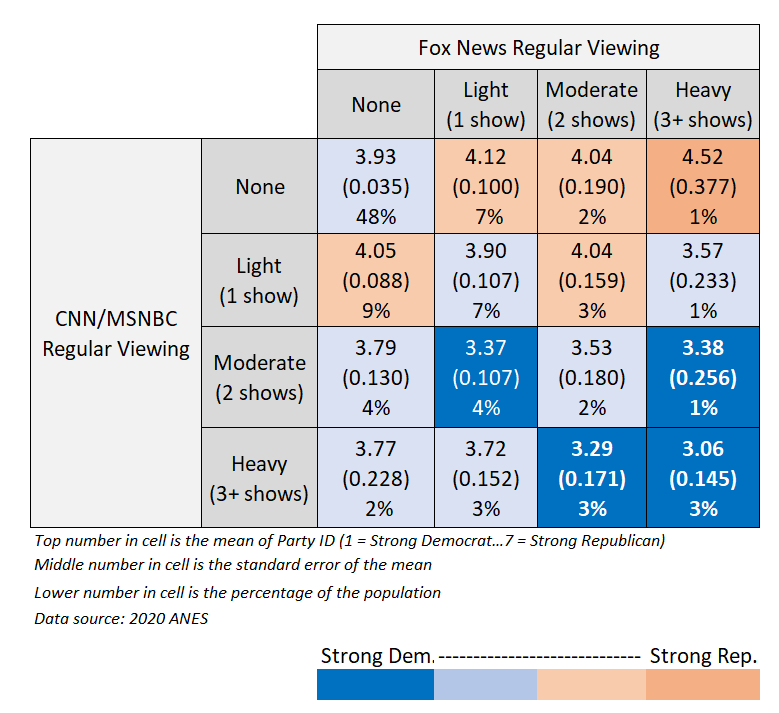By Kent R. Kroeger (Source: NuQum.com; July 17, 2022)
The following essay uses only open source data and is available — along with computer scripts used for data transformations and index constructions — on Github (here). As always, all errors remain mine.
“Americans’ confidence in newspapers and television news has plummeted to an all-time low, according to the latest annual Gallup survey of trust in U.S. institutions.”
This was the lead in a recent Axios article announcing Gallup’s results on Americans’ confidence in its institutions.
Americans do not trust their primary news sources. And why should they? Our main sources of news routinely (deliberately?) misrepresent reality. The mainstream media (MSM) is the “principle disseminator of fake news,” according to Tsfati et al. (2020), who conclude that “most people hear about fake news stories not from fake news websites but through their coverage in mainstream news outlets.”
According Gallup’s latest numbers, 16 percent of Americans have confidence in newspapers and only 11 percent have confidence in television news (see Figure 1).
Most Americans have little confidence in the news they receive from their primary news sources, and this confidence has been falling consistently since at least the early 1990s.
Figure 1: Confidence in newspapers and television news over time (Source: Gallup Poll)
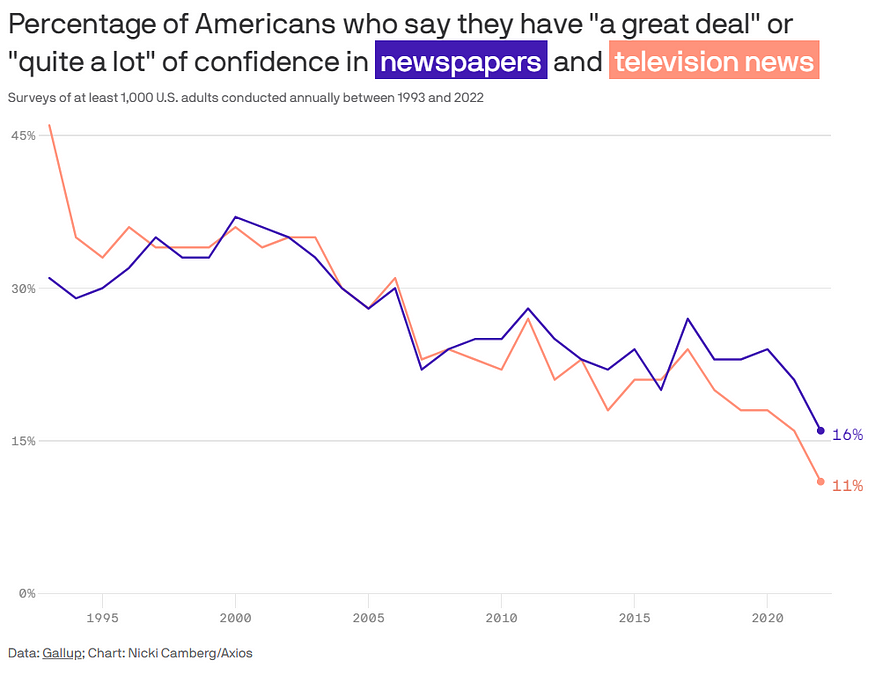
Why the declining confidence in the news media?
Some proposed causes of declining confidence in the news media include (but are not limited to):
- a general decline in the public’s confidence with all social institutions,
- the rise of alternative news sources which often justify their existence by expressing harsh critique’s of the MSM,
- a growing elitism within the ranks of MSM journalists and editors,
- an increasing disconnect between “reality” and what is reported in the news,
- the rise of partisan news organizations (e.g., Fox News), and
- the wider spread and amplification of “fake” news (see Tsfati et al. [2020]) which research suggests Americans over-estimate their ability to spot.
The explanation of declining news media confidence may be found in all of these factors, but something else may also be at play. There has been a perceptible decline in accountability within the MSM when it gets a story wrong (e.g., Richard Jewell and the Centennial Olympic Park bombing in 1996, Iraq and WMDs, Russiagate, Russians alleged hack of U.S. electricity grid, to name a few).
The New York Times fired Judith Miller, one of their star journalists, because of her inaccurate reporting on alleged weapons of mass destruction leading up to the Iraq War. And she didn’t deliberately falsify information — she simply relied on biased or bad sources.
She was fired and forever banned from employment in the “respected” news media.
Fast forward to today, and not a single New York Times or Washington Post journalist was dismissed or reprimanded for spreading what turned out to be false information about Donald Trump and alleged collusion with Russia prior to the 2016 election. A sitting president was basically smeared for four years and not one journalist or organization was held accountable for the poor and often false reporting that occurred during Trump’s term in office.
We are all adults here. We know why this happened. The political and economic establishment wanted Trump out of office any way possible.
Comedian and popular podcaster Jimmy Dore loves to tell his audience that the MSM’s central function is to spread propaganda for the political and economic elites. “When you lie at the behest of the establishment, there is never a price to pay…ever,” Dore said during an interview in 2019 with Matt Taibbi and Katie Halper. “The people who consider themselves journalists have no idea how they’ve been groomed for that job. They’re chosen and guys like me are not chosen to work for (mainstream news organizations), and if they do, they fire my ass.”
Dore’s observation is hardly novel. Academics and media critics have been making this argument for years, most famously by Edward S. Herman and Noam Chomsky in their seminal book Manufacturing Consent:
“The mass media serve as a system for communicating messages and symbols to the general populace. It is their function to amuse, entertain, and inform, and to inculcate individuals with the values, beliefs, and codes of behavior that will integrate them into the institutional structures of the larger society. In a world of concentrated wealth and major conflicts of class interest, to fulfil this role requires systematic propaganda.” (Manufacturing Consent, 1988)
The Fox News effect is also frequently mentioned when discussions of declining news media confidence arise. [Such arguments are found here and here.] According to this argument, Fox News is that one bad apple that spoiled the whole bunch. “Things were fine before Fox News” is a common syllogism within this line of reasoning.
Unfortunately, it is not that simple.
The decline is, in fact, common across partisan preferences: While Democrats have more confidence in the news media than Republicans, their confidence has also declined for both TV news and newspapers in the past year (see Figure 2).
Figure 2: Changes in confidence in institutions between 2021 and 2022 (Source: Gallup Poll)

Rumors of the MSMs demise are greatly exaggerated
But for all the pissing I’ve done on the MSM in my past blogs, and repeatedly imploring Americans (and all world citizens, for that matter) to diversify their news and information sources, I should acknowledge that the MSM is far from dying or obsolete. Not only is the MSM very much alive, it still dominates our daily news ecosystem — even in the Age of Joe Rogan.
The New York Times has seen its subscriptions, revenues and profitability consistently rise since 2016 (did the ‘Orange Man’ help?), and while the viewership for cable TV news networks has dropped from Trump-administration-era highs, these news outlets are not on the brink of financial collapse.
Granted, CNN, MSNBC and Fox News are no longer just competing among themselves for America’s news-watching eyeballs — they must now contend with those eyeballs fleeing to the digital world to watch personalities like Joe Rogan, Ben Shapiro, Lex Fridman and Jimmy Dore, or to watch news podcasts from The Hill and Breaking Points.
Based on my previous research, Google Trends may be useful in measuring the public’s attention to various news outlets, particularly given the many points-of-access now available to news consumers — such as TV, newspapers, radio news websites, YouTube, and podcast streaming services. The broadcast and streaming media ratings measurement services have a titanic challenge in capturing the degree to which Americans interact with their favorite news and information sources.
In previous posts, I’ve used Google Trends to assess levels of interest across selected media properties and found, generally, that Google search behavior mirrors and often predicts levels and changes in audience sizes for these media properties (see the Appendix below for a back-of-the-envelope comparison of Google Trends and streaming viewership for Netflix’s Stranger Things and Disney’s Obi Wan Kenobi).
Thus, I believe Google Trends may be appropriate for assessing the public’s interest in major news organizations and personalities.
The news and information landscape is more fragmented than ever in terms of available options, but in terms of the public’s attraction (as measured by Google searches), the traditional media outlets still rule (see Figure 3).
Figure 3: Changes in confidence in institutions between 2021 and 2022 (Source: Gallup Poll)
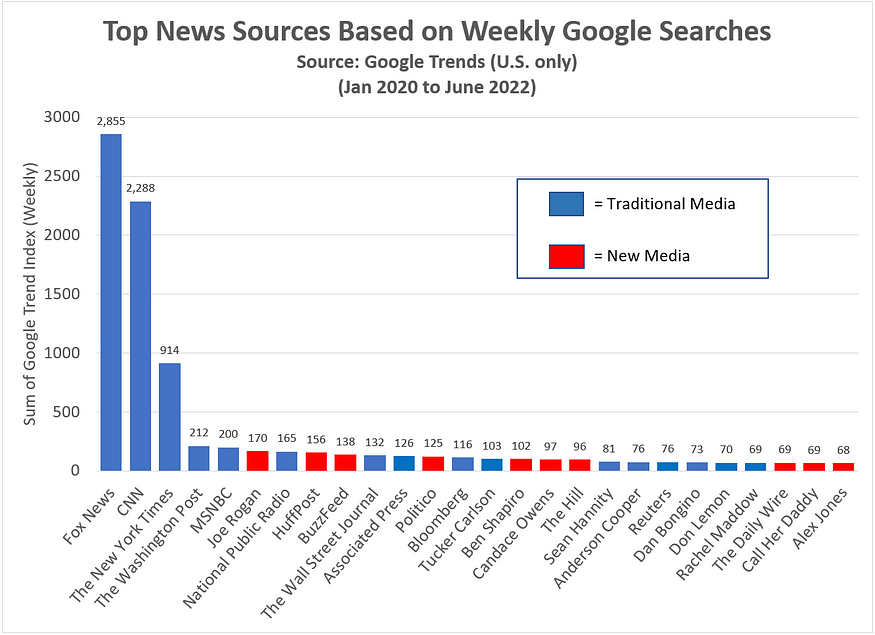
According to the sum of the weekly Google Trends Index (GTI) from January 2020 to June 2022, Fox News (GTI = 2,855), CNN (GTI = 2,288), and the New York Times (GTI = 914) dominated Google searches over that period.
Seven of the top 10 news and information entities were traditional media outlets, with only Joe Rogan (GTI = 170), the Huffington Post (GTI = 156), and BuzzFeed (GTI = 138) representing new media among the top news and information sources.
In comparison, between January 2016 and June 2018, the Huffington Post and BuzzFeed were the only two new media entities in the top 10 on Google Trends (data not shown, but available upon request).
Ostensibly, the big mover in public’s attraction has been Joe Rogen (The Joe Rogan Experience) — arguably the most important and influential podcaster in the country today — but beyond the dominant news outlets (i.e., Fox News, CNN, the New York Times, the Washington Post, and MSNBC), ten of the next 21 top news and information outlets are new media properties (Rogan, HuffPost, BuzzFeed, Politico, Ben Shapiro, Candace Owens, The Hill, The Daily Wire, Call Her Daddy, and Alex Jones).
Yes, Alex Cooper’s Call Her Daddy probably can’t be categorized as a news or information program, but it is often political in content and it ranks highly compared to other news and entertainment properties.
If we factored in the operational costs associated with each of the entities in Figure 3, Rogan, Shapiro, Owens, Dan Bongino, Call Her Daddy and Jones would undoubtedly be the most economically efficient attractors of the public’s interest in today’s news and information landscape. It is not hyperbole to suggest new investments in news and information would be most profitable in the podcast, not traditional media, arena.
Final Thoughts
I believe Joe Rogan has maxed his audience and influence. Just a hunch. But that is not the same as saying his media model isn’t relevant for the future.
Low-cost, opinion-oriented podcasts are not going away. To the contrary, their central role going forward is to interpret the biased news we receive from the mainstream media. We shouldn’t need these podcast interpreters of the news, but we do.
For good reason, Americans do not trust the mainstream media — you decide the fundamental reason for that empirical fact.
In the meantime, understand that the quest for media ratings and success in electoral politics is little more than a popularity contest, not that dissimilar from the interpersonal forces that determined popular kids from unpopular ones in high school. Our electoral process is that shallow.
The objective facts in politics are subordinate (but never irrelevant) to the narrative that supports the interests of established elites, who will do everything in their power to kill anti-establishment points-of-view circulated on such on podcasts like The Joe Rogan Experience and Breaking Points.
Will the establishment win or fail in their anti-free-speech project? The answer is up to us.
- K.R.K.
Send your comments to kroeger98@yahoo.com
Appendix: Strangers Things vs. Obi Wan Kenobi
I am both a fan of Netflix’s Stranger Things and George Lucas’ Star Wars. So when Disney’s Obi Wan Kenobi series and Netflix’s Stranger Things released new episodes at the same point in time, not only did I have watch both, but I was intrigued as to how each performed in terms of audience interest.
I was also interested to see if interest in the two shows on Google Trends corresponded to reported audience measurements (i.e., Nielsen streaming ratings).
The correspondence was positive and striking (see Figure A.1).
Figure A.1: Audience levels and Google searches for Stranger Things and Obi Wan Kenobi between May 15 and June 15, 2022 (Source: Nielsen and Google Trends)
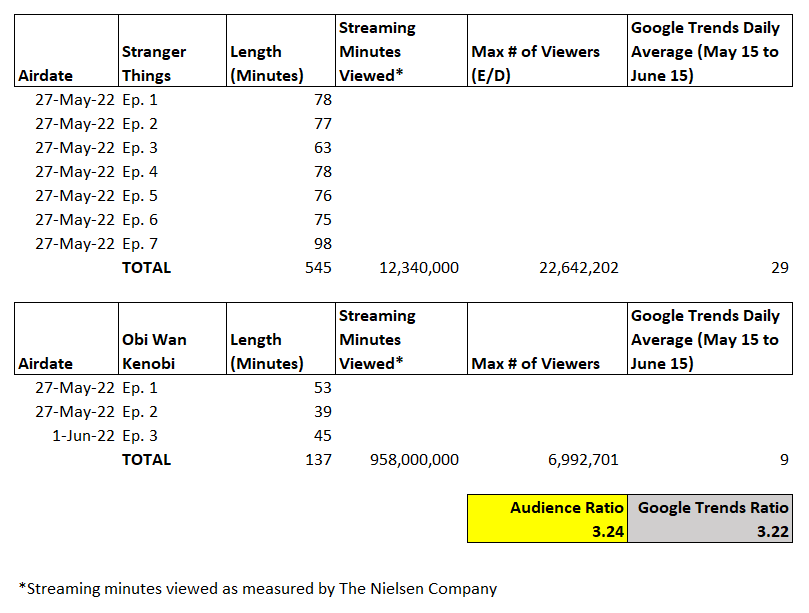
The ratio of audience viewing levels and the relative number of Google searches was nearly identical for both Stranger Things and Obi Wan Kenobi (3.24 vs. 3.22).


